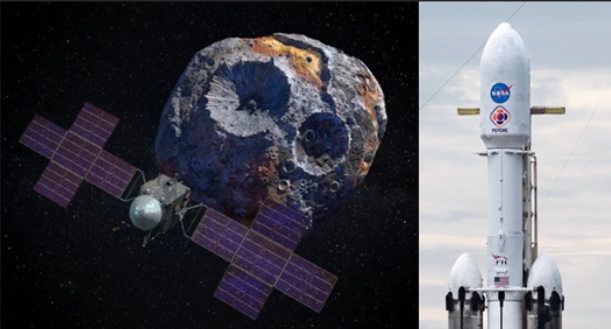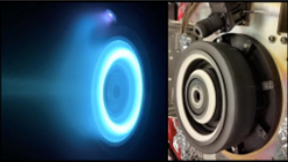Psyche Asteroid Mission
- Tomás Woods
- Nov 6, 2023
- 2 min read

Psyche is now on its way to a metal-rich asteroid with the same name! This will mark NASA’s first visit to a metal-rich rock in the asteroid belt between Mars and Saturn. This asteroid could have once been the core of a planet during the formation of our solar system, and analysing it could give us insight into the formation of our own planet and core’s composition. Perhaps, going out there in space in search of an ancient planet’s core, might be the only way to study the one in the centre of our planet, where we might never reach. Packed with the latest technology, Psyche will be testing NASA’s solar electric propulsion and the long waited deep space optical communication system (DSOC).
In September of 2015, NASA selected the Psyche Mission to conduct a more profound study that could later promote it for NASA’s Discovery Program. A large team of researchers and managers led by Lindy Elkins Tanton (principal investigator) from ASU, JPL, Maxar Technologies, universities and research organisations gathered to submit an 1000-page concept study of the mission back in August 2016. By January 4th 2017 and after several intense reviews and screening performed by industry leaders and world-class scientists, NASA announced the selection of Mission Psyche for launch.
The main goal of the mission is to understand iron cores, which is a previously unexplored building block of plant formation. To achieve this, the Psyche spacecraft is fitted with science instruments and sensors such as the Multispectral Imager, Gamma Ray and Neutron Spectrometer, a Magnetometer and an X-band Gravity Science equipment. The Multispectral imager will provide high-resolution images designed to acquire geologic, compositional and topographic data. The Gamma-Ray and Neutron Spectrometer are two separate pieces of hardware that will combine to map Psyche’s elemental composition remotely (without needing to drill through surface). Meanwhile, the magnetometer will measure the remanent magnetic field of the asteroid using twin high-sensitivity magnetic field sensors. Finally, the wide antenna on the exterior of the satellite will use X-band radio telecommunications system to measure Psyche’s gravity field with high precision.
In addition to all the science instruments, the spacecraft is also equipped with the latest solar electric propulsion technology and deep space optical communication system (DSOC). The spacecraft will use its two series of folded solar panels to power 4 electric Hall thrusters that accelerate noble gas “xenon” with an electromagnetic field to expel blue beams of ionised xenon (bellow):

Moreover, the Psyche Mission will mark the first ever use of NASA’s DSOC optical communication system that will use lasers to encrypt information rather than radio-waves. This allows for far greater information to be sent within the same timeframe when compared to traditional systems.
Psyche has successfully launched from historic launch-site, pad 39A in Cape Canaveral (Florida) on Oct. 13 2023 at 10:19 a.m EDT and is on its way to the asteroid belt. It should arrive at its asteroid on August 2029.
Sources (in MLA format):
"Solar Electric Propulsion Makes NASA's Psyche Spacecraft Go." NASA, Jet Propulsion Laboratory, 5 June 2021, https://www.jpl.nasa.gov/news/solar-electric-propulsion-makes-nasas-psyche-spacecraft-go.
"Psyche Mission." NASA, Jet Propulsion Laboratory, https://www.jpl.nasa.gov/missions/psyche.
"Instruments & Science Investigations." Psyche Mission, Arizona State University, https://psyche.asu.edu/mission/instruments-science-investigations/.
“NASA Laser Communications Innovations: A Timeline." NASA, https://www.nasa.gov/missions/tech-demonstration/nasa-laser-communications-innovations-a-timeline.






Comments